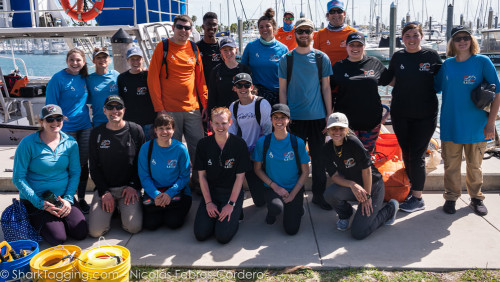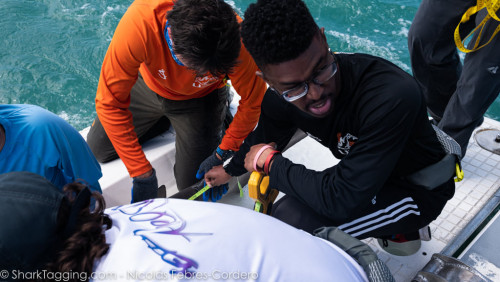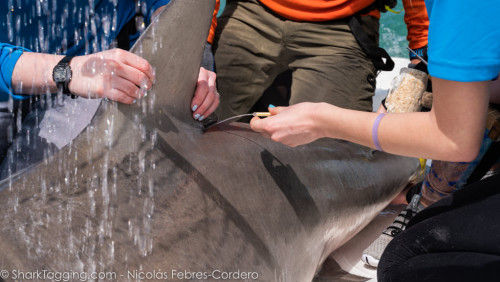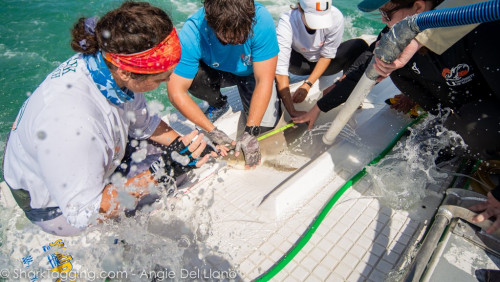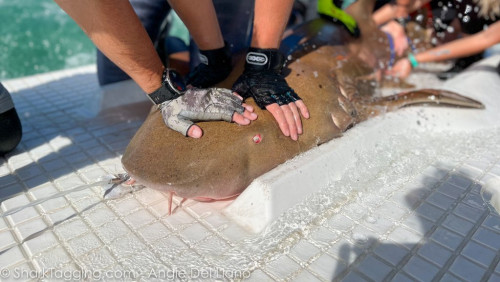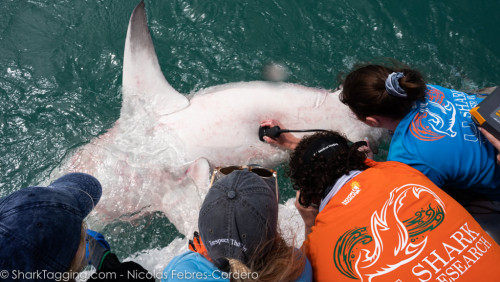Malone University students tag sharks and care for Earth
A team of Malone students aided the University of Miami with shark tagging research
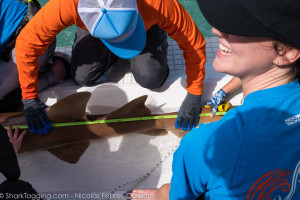
It’s not everyday that students and professors in Northeast Ohio have the opportunity to catch and tag an eight foot nurse shark, but thanks to grant funding from the Herbert W. Hoover Foundation, a group of Malone students and faculty were able to do just that.
Over spring break, Jason Courter, associate professor of biology, and Steven Lane, assistant professor of biology, guided ten Malone students on a week-long trip to Florida, three days of which included working with members of the University of Miami Shark Research and Conservation Team to catch, observe, tag, and release safely numerous species of shark found in the Atlantic Ocean.
"During this year's trip, we caught four species of sharks; nurse sharks were the most common, then bull sharks, as well as blacknose and blacktip sharks," said Courter. "With a full 7 or 8 hours at sea, our students were divided into teams and responsible for a variety of tasks. It's exciting, humbling, and amazing to watch these massive animals be brought onto the boat. Even for me, watching these giant animals emerge from the depths never gets old."
What happens next in the research process is a flurry of activity, kick-started by UM researchers performing the duties of shark-wrangling.
“Three people hop on and straddle the shark to immobilize it, then the Malone team comes down and one person places a large tube in the mouth of the shark to keep water flowing over their gills, which is what sharks need to breathe; then a Malone person is on the ‘shark shower’, keeping the shark's skin moist. Other team members then do the measurements of the shark, like total length and width of the animal, and then we do a little fin clip. Sharks don’t have nerve endings in that spot, so we get a tissue sample to do analysis of that shark, and then we put a tag on the shark below the dorsal fin,” said Courter. “These tags allow researchers to track shark populations, area densities, and movement patterns.”
After these initial tests, the graduate researchers from Miami step in.
“Next the UM team draws blood or anything else they need, and that all takes six to eight minutes. Finally we remove the hook and tube from the shark and release it off the boat,” said Courter.
The boats full of undergraduate and graduate students alike would drive around to various buoys, set up with 900 pound test fishing line and large pieces of barracuda, where they would then, with the help of hook timers, know if there was a shark to be pulled up, by hand, to the boat.
The teams also had considerations in place to monitor the condition and stress of sharks that were hooked.
“The biggest thing is really making sure we’re doing more good than harm. They have it really down to a system,” said Courter.
It wasn’t just shark tagging that the team was capable of doing, either. The boat was a state-of-the-art research vessel, complete with a centrifuge to process blood samples and even an ultrasound machine. Hannah Damewood’s ‘23 favorite aspect of the trip was observing an ultrasound on a pregnant Bull shark.
“Being able to see a pup on the screen was really interesting, and I hope one day that pup will grow up to be a full-size shark that other Malone students may tag in the future,” said Damewood.
And although the trip was an educational and enjoyable experience, creation care was at the core of each day. While catching, tagging, and releasing sharks was the main event, the Malone group also helped with coral restoration and worked in conjunction with Debris Free Oceans and the National Park Service to clean a beach where sea turtles nest.
“We picked up 707 pounds of trash on a beach where sea turtles nest in Biscayne National Park, and that’s an area where the Herbert W. Hoover Foundation has strong historical ties,” said Courter.
Malone University is grateful to have such a strong partnership with the Herbert W. Hoover Foundation.
“The Foundation approached our department and explained their emerging focus on water related issues and education,” said Courter. “Collectively we put together the idea of this trip as a way to connect Malone students and Stark County with issues associated with ocean health. We’re extremely grateful for their continued support.”
Help from the Herbert W. Hoover Foundation makes it possible for Malone students to gain a deeper understanding of the interconnectedness of their lives as students in Ohio and the rest of the country, and world.
“It's really exciting to see how students are equipped to tell a story of the connections between Ohio and the oceans. In terms of water quality issues, it's more connected than people think. Everything from seafood choices to vacation spots,” said Courter. “On our beach clean up, one of the balloons we cleaned up was a Cincinnati Bengals balloon - to think that a balloon from a Bengals fan in Ohio ends up on a sea turtle nesting beach in Florida, there’s a connection there. Ultimately we want to become better stewards of the Earth, and that’s what excites me the most.”
Thanks in large part to the Herbert W. Hoover Foundation, the future of these trips is bright.
“I hope to broaden the scope of opportunity for students. Hopefully we can identify possibilities to include SCUBA diving more, and help get students certified,” said Courter. “As a whole, the trip helps make the picture of graduate research clearer, and we have students coming to Malone because they’re interested in marine biology. We interact with a lot of other scientists, so students can even see different on-ramps to marine conservation, so that can broaden their scope to see new opportunities.”
It’s not out of the question for this “broadened scope” to be a direct pathway to a student’s next steps after graduation. Two years ago Malone alumni Ivan Mendoza ‘20 was a student on the trip, and he is now enrolled at the University of Miami as a graduate student. Current students are also able to gain confidence in themselves, their knowledge, and their skills.
“While we’re on the boat we also get to talk with undergraduate and graduate students from UM - it's neat because our students get to see that they have expertise caring for animals in a zoolike setting; so they come to understand that they have expertise that the UM students may not have. And the UM members are really interested in our students, what they’re doing and what Malone’s program is like. There’s some cool cross-pollination there,” said Courter.
The Malone Zoo and Wildlife Biology program certainly benefits from a trip like this and, thanks to the Herbert W. Hoover Foundation, that benefit extends far beyond the walls of Timken Hall. Cleaner oceans, healthy sharks, and smarter students. That’s quite the catch.
Malone University Shark Tagging Trip
